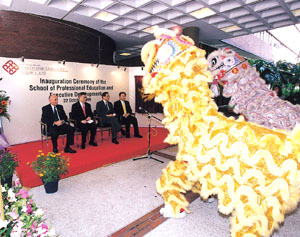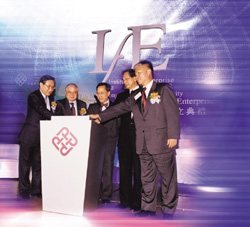|
An Esteemed University
Today, PolyU is a fully-fledged institution of higher learning
and remains the largest publicly funded tertiary institution
in terms of student population. At the dawn of this new millennium,
the total student enrolment on taught programmes exceeded
16,800, with 11,500 being full-time students and the rest
part-time students. The research student population stood
at about 900.
With 26 academic departments and three centres grouped under
six faculties, PolyU offers a broad range of application-oriented
programmes at levels ranging from higher diploma and bachelor's
degrees through to master's and doctoral degrees.
In addition, the University set up its School of Professional
Education and Executive Development (SPEED) and Institute
for Enterprise (IfE)  in
1999 to further strengthen the self-financing continuing education
and professional services it offers to business, industry
and the community. in
1999 to further strengthen the self-financing continuing education
and professional services it offers to business, industry
and the community.
Another breakthrough came in June 2000, when PolyU launched
The Hong Kong CyberU (HKCyberU), the first Hong Kong-based
university in cyberspace. Co-founded with Pacific Century
CyberWorks (PCCW), HKCyberU is an advanced learning institution
offering PolyU programmes on the Internet.
Along with its steady growth in stature, the PolyU campus
has evolved to its present size of about 93,500 square metres.
In support of the all-round development of students, the University's
student hostels, located close by the campus in the Hung Hom
Reclamation Bay, will be opened shortly to offer a total of
3,004 hostel places.
|





